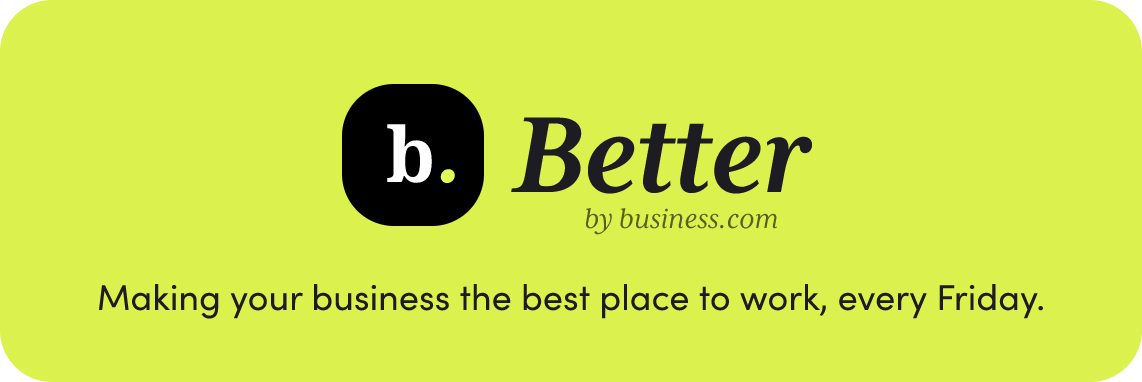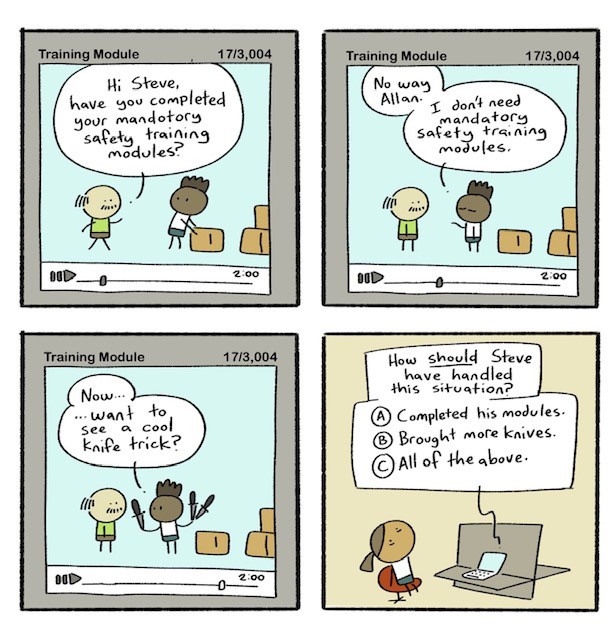In a single word, how would you describe your average workday? It could depend on your earnings, according to a nationwide survey commissioned by Preply:
- Americans who make over $150,000 annually consider their typical day at the office “enjoyable.”
- At $100,000 to $150,000, however, your job is more likely to feel “annoying” “and “stressful.”
- At $55,000 to $65,000, work tends to be “easy” but “unpredictable,” and from $25,000 to $55,000, it’s a bit more “routine.”
- Under $25,000, a typical day is downright “exhausting.”
So, as you’d expect, it’s better to make a lot of cash than very little of it … but perhaps surprisingly, middle-income workers might feel extra responsibility isn’t always worth higher compensation. As for specific industries, healthcare and education workers feel the most stressed; transportation, manufacturing, and sales workers feel the most bored; and tech workers are having the best time of all.
|
|
|
A Hallmark VP Faced Personal Tragedy and Found The Gift of Perspective
|
At 31, Lindsey Roy was named vice president at Hallmark Cards, one of the youngest in the company’s century-long history. (She’d worked there since age 22.) Five years later, a boating accident left her with an amputated left leg and other serious injuries.
And then another life-threatening event struck: she was diagnosed with a rare autoimmune disease that led to a double lung transplant.
After delivering a TEDx Talk that has been viewed more than 180,000 times, Roy has written a new book, The Gift of Perspective: Wisdom I Gained From Losing a Leg and Two Lungs. “It’s the act of actively keeping [that] my book is all about,” she told b.
It traces her personal journey but also her professional one, and how perseverance applies to both. Roy felt that she had a choice to either give up and deal with the circumstances or keep grinding ahead. “It’s really just resilience and resourcefulness muscles,” she says. “Those have helped me tremendously at work, to be able to tap into that notion of ‘don’t give up, there will be a new answer here.’”
(She also persevered through humor, saying before surgery, “Don’t worry, I’m going to write a book and become a professional speaker and only have to work one day a month.”)
Importantly, Roy notes that her Hallmark colleagues continued to treat her like a “normal person.” As she meets people outside the company — whether at conferences, conventions, partnerships or when speaking — she is generally treated with the normal respect any businessperson would receive. However, there’s also a degree of empathy and shared vulnerability.
“I found that when you’re willing to tell your story, other people want to tell theirs too, and everybody has a story,” Roy says. “But they’re not necessarily harder or easier. You don’t compare challenges.”
But those challenges are real, and spreading the message that life continues — and thrives — with them is now Roy’s personal purpose and mission, creating connections beyond the conference room. “I just believe that we add to our collective wisdom if we all have a little bit of courage to share our stories and support each other when we do so,” she says.
|
|
|
Your Website Needs a Refresh, and Squarespace Is Here For It
|
|
|
Getting More Employees to Fill Out Your Surveys
|
Dr. Steven Rogelberg is a chancellor’s professor at UNC Charlotte, former president of the Society for Industrial and Organizational Psychology, and author of Glad We Met: The Art and Science of 1:1 Meetings.
Surveying employees is frequently done as a critical mechanism for learning what’s on their minds to track progress, monitor and evaluate, and make good evidence-based decisions. When our response rates are low, however, our collected data might not be truly representative.
Here are techniques and best practices for increasing your survey response, all supported by the science:
Notify employees in advance: Let potential participants know about the upcoming survey as early as possible, preparing them for the survey process and how the data will be used. Emphasize the significance of participants’ opinions and involvement. (This has continually proved to be one of the best ways to promote survey response.)
Carefully design the survey: Ensure it is visually appealing, easy to read, and organized.
Manage survey length: Keep it as short as reasonable. Focus on what is truly necessary.
Offer incentives: Small, inexpensive items (or certificates for free food/drink) have proven to boost response rates. Another approach is to make donations to charities in response to employees’ participation. Lotteries have also shown some success.
Send reminder communications: Remind potential respondents by email, starting three to seven days after the survey has been distributed. Two or three rounds of reminders are helpful; after that, gains in responses are not significant.
Ensure accessibility: Guarantee equal survey participation opportunities for everyone. Provide alternatives, like paper surveys, for employees without home computer access or schedule a survey response time during office hours if needed. Run the survey for an adequate duration to accommodate vacation schedules.
Track response rates: Keep a close watch to identify departments with low participation. Consider fostering friendly competition among different units.
Share survey feedback: Once data is collected, provide participants with feedback. This approach influences future survey efforts positively.
Surveys shouldn’t only be conducted internally. Learn about the importance of survey data in marketing.
|
|
|
The Shining: Maybe Return-to-Office Isn’t So Scary?
|
|
|
With Halloween days away, it’s time to watch a classic spooky movie. We recommend Stanley Kubrick’s The Shining (based on Stephen King’s supernatural horror novel) because in 2023, what’s spookier to many managers than working from home?
“Some places are like people: some shine, and some don’t,” says Dick Hallorann to young Danny Torrance, whose novelist father Jack brings their family to an empty (or is it?) Colorado hotel for the winter. Hallorann is discussing telepathic powers, but in a film about isolation, those words also reflect the workplace. Let’s just say that Jack isn’t cut out for WFH.
For some employees, especially those who have children or social phobia, remote work is a boon for time and stress management; besides, nobody loves being stuck in traffic twice a day.
But psychological research has found that remote and hybrid workers do tend to experience increased rates of anxiety and depression — even if they aren’t busting through doors with an ax. Solitude isn’t healthy for most of us. Being part of a community fosters belonging, support, and purpose.
You won’t find those at the Overlook Hotel, but you might find them among your peers at the office. Either way, just remember that work-life balance is essential — all work and no play makes you a … well, you know the rest.
|
|
|
Written by Jane Meggitt and Dan Ketchum. Comic by John McNamee.
|
|
|
|








